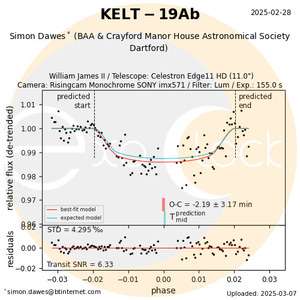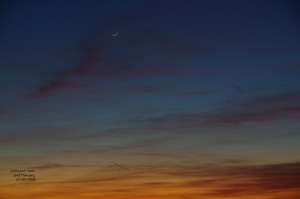NEVER LOOK AT THE SUN DIRECTLY. Please click here for solar observing safely.
A superb selection of astro images taken by member Honor Wheeler on the 1st March 2025 of the Sun, Moon and the planetary parade.
Details of how Honor took her images are written above each image.
Venus phase - Canon M6II with Tamron 18-400mm lens, ISO400, f6.3, 1/16000sec.
Even when Venus is a fine crescent, the albedo of Venus is still high.

Sunset Sunspots - Canon M6II with Tamron 18-400mm lens. ISO100, f29, 1/16000sec.

Sunset - Canon M6II with Tamron 18-400mm lens. ISO200, f10, 1/800sec

Mars, Jupiter, Venus, Moon and Mercury - Canon M6II with Tamron 18-400mm lens. ISO500, 1/2sec taken using Samyang 8mm fish-eye lens.

Venus, Earthshine and Mercury - Canon M6II with Tamron 18-400mm lens. ISO640, f5.0, 1/3sec.

Earthshine - Canon M6II with Tamron 18-400mm lens. ISO640, f6.3, 1"1/3sec
































